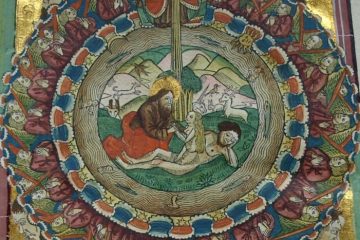Cieszyn’s Archducal Chamber files are the most valuable items kept in Cieszyn’s Branch of the State Archive in Katowice.
The records collected in the seat of Cieszyn Dukes from the House of Piasts and later administrators of Habsburg Dukes include parchment papers, books and records of the former Cieszyn Castle Archives dating back to years 1438–1929. Despite its incomplete status, researchers consider this documentation to be a primary source of knowledge about the history of Cieszyn Silesia, large areas of which had been managed, until the fall of the Austro-Hungarian Monarchy, by the Archducal Chamber Directorate. Habsburgs held the land of Silesia and Cieszyn partly based on a former fief – Duchy of Cieszyn with fief-associated titles and prerogatives of Cieszyn Dukes – and partly as family possessions, bought mainly in the 18th and 19th centuries.
The independent Duchy of Cieszyn was established around 1290, when the oldest son of Władysław of Opole and Racibórz, Mieszko, was granted the castellany of Cieszyn and the lands of Oświęcim. The Piasts ruled the Duchy until 1653, i.e. death of the last dynasty representative, Duchess Elizabeth Lucretia. After the end of Cieszyn’s line of the Piast Dynasty, the Duchy was granted to the Habsburgs, as the Kings of Czech Lands, due to the fact that Kazimierz I, the Duke of Cieszyn, paid homage to the King of Czech Lands, John of Luxemburg already in 1327. When Ludwig, the King of Hungary and Czech Lands, died in the Battle of Mohacz against the Turks in 1526, the lands ruled by St. Vaclav were granted to the Habsburgs based on earlier agreements. When Elizabeth Lucretia died, the Duchy of Cieszyn, as ended fief, was taken under the direct ruling of the Kings of Czech Lands, who held the title of Roman Emperors of the German Nation at the same time. When the 1st World War ended, the possessions of Cieszyn’s Archducal Chamber were taken by the new countries of Poland and Czechoslovakia based on the Peace Treaty of St. Germain.
Dukes of Cieszyn influenced development of the economic and social life in Cieszyn’s Silesia, as well as the development and formation of political, judiciary, tax, church, religious, native, educational, cultural and other secondary relations, which is evidenced in the records.

